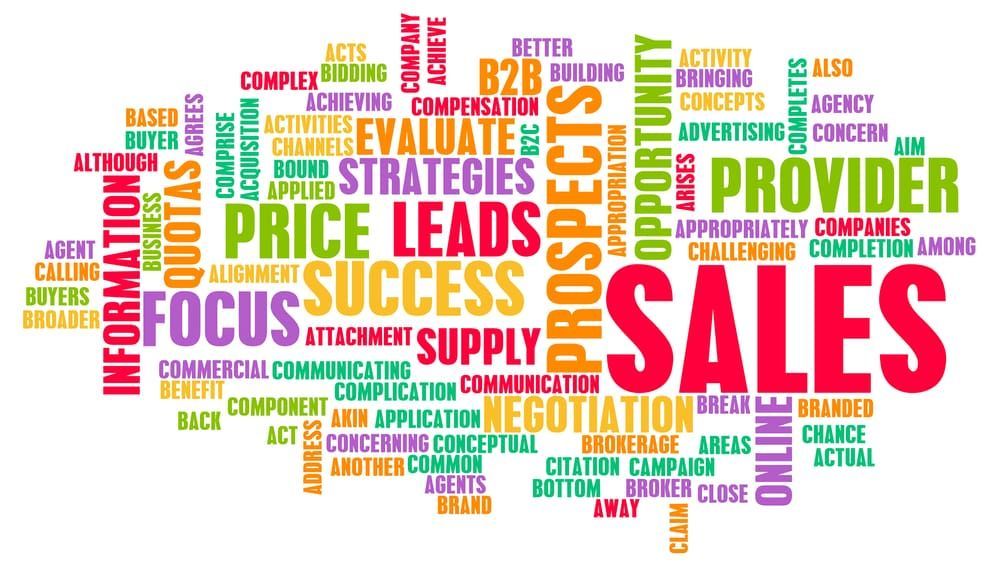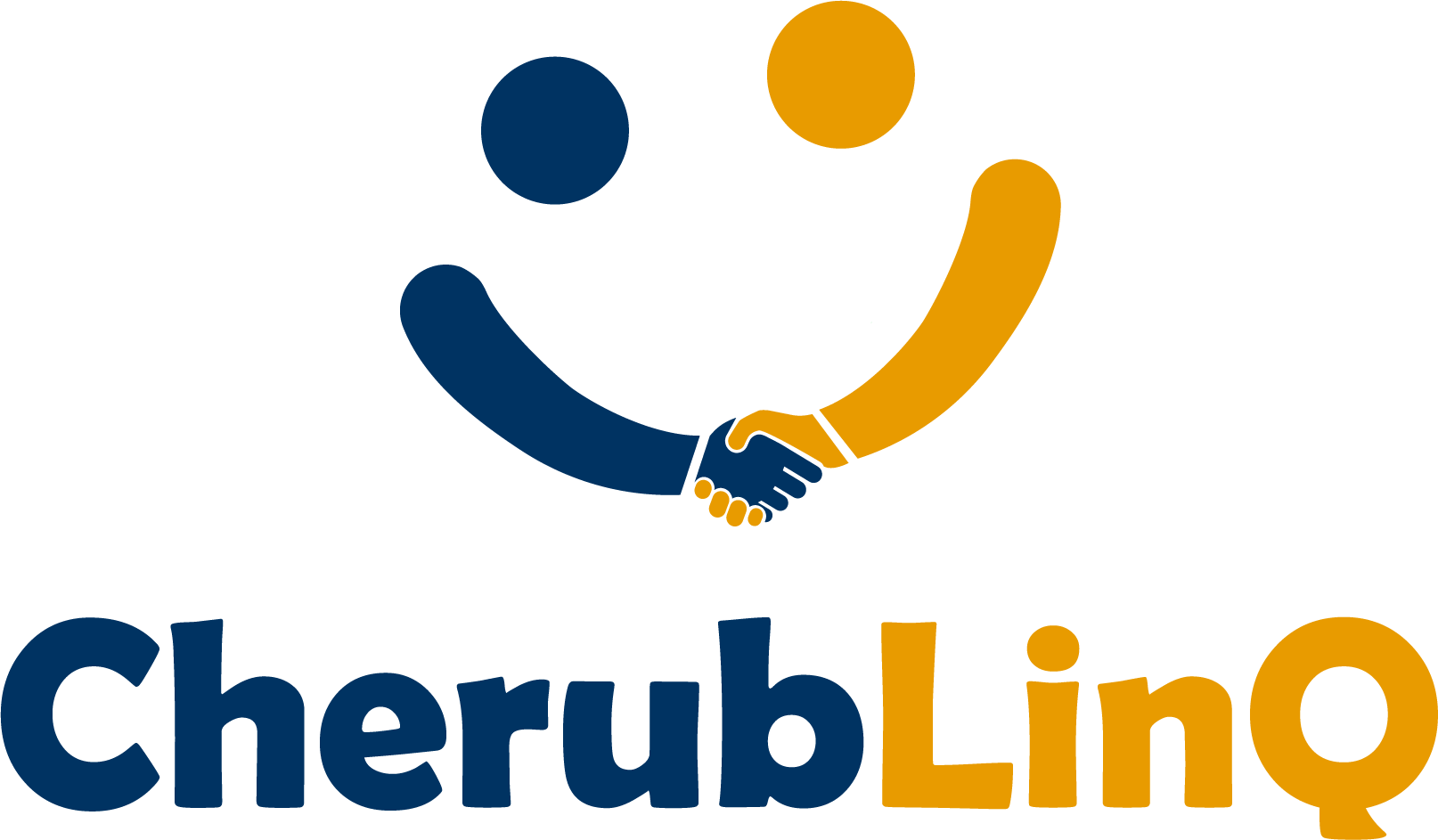CherubLinQ Sales Tips : Client Lead Tracking Tips & Pipeline Management Solutions
CherubLinQ Tips : Client Lead Tracking Tips & Pipeline Management Solutions

The Necessity of Client Lead Tracking
Tracking client leads is not just a fancy business term; it's a fundamental practice for any company that wants to grow and succeed. By keeping tabs on where your leads are in the sales pipeline, you can tailor your approach to meet their specific needs. This ensures that no potential client slips through the cracks and that your sales team is always working on the most promising opportunities.
Identifying the Right Tools for Lead Tracking
Before diving into lead tracking, it's essential to have the right tools at your disposal. The most effective way to manage leads is by using Customer Relationship Management (CRM) software. CRMs are designed to handle a multitude of tasks, from storing contact information to tracking interactions and analyzing data. Choosing the right CRM can make a world of difference in how smoothly your lead tracking process runs.
Popular CRM Systems
There are several CRM systems out there, each with its unique features and benefits. Some of the most popular ones include:
- Salesforce: Known for its robust features and customization options.
- HubSpot: Offers a free version that's great for small businesses.
- Zoho CRM: Provides excellent automation capabilities.
- Nutshell: User-friendly and ideal for small to medium-sized businesses.
Advantages of Automating Lead Tracking
Automating lead tracking offers numerous benefits. First and foremost, it saves time. Instead of manually entering data and updating records, automation handles these tasks for you. This not only frees up your time but also reduces the risk of human error. Furthermore, automation ensures that your data is always up-to-date, providing you with accurate information to base your decisions on.
Customizable Lead Board Cards
One of the standout features of many CRM systems is the ability to customize lead board cards. These cards give you a snapshot of each lead's status, including their stage in the sales pipeline, confidence level, and potential value. Customizing these cards to display the most relevant information can help your sales team quickly assess and prioritize their efforts.
- Stage: Where the lead is in the sales pipeline.
- Confidence: The likelihood of converting the lead into a client.
- Value: The potential revenue the lead could generate.
Effective Client Lead Tracking Strategies
Utilizing CRM Systems for Lead Management
To make the most of your CRM system, it's crucial to understand how to use it effectively for lead management. This involves setting up your CRM to capture all relevant information about your leads, from initial contact to final sale. By doing so, you can ensure that your sales team has all the information they need to make informed decisions and move leads through the pipeline efficiently.
Why CRM Systems are Crucial
CRM systems are essential because they centralize all your lead information in one place. This means that everyone on your sales team has access to the same data, which promotes consistency and collaboration. Moreover, CRMs can generate reports and analytics that provide insights into your sales process, helping you identify areas for improvement and optimize your strategy.
How to Choose the Right CRM
Choosing the right CRM involves considering several factors, including your business size, budget, and specific needs. Here are some tips to help you make the right choice:
- Identify your needs: Determine what features are most important for your business.
- Consider scalability: Choose a CRM that can grow with your business.
- Evaluate ease of use: Ensure the CRM is user-friendly and easy to implement.
- Check for integrations: Make sure the CRM can integrate with your existing tools and systems.
Lead Scoring Techniques
Defining and Implementing Lead Scoring
Lead scoring is a technique used to rank leads based on their potential value to your business. This helps you prioritize your efforts and focus on the leads that are most likely to convert. To implement lead scoring, you need to define the criteria that are most important for your business. These might include factors like lead source, engagement level, and buying intent.
Once you've defined your criteria, you can assign scores to each lead based on how well they meet these criteria. For example, a lead who has downloaded multiple resources from your website might receive a higher score than one who has only visited once.
Prioritizing Hot Leads
Hot leads are those that show a high level of interest and are close to making a purchase decision. Prioritizing these leads ensures that your sales team focuses their efforts where they are most likely to yield results. To identify hot leads, look for indicators like frequent engagement with your content, high lead scores, and direct inquiries about your products or services.
Tracking Lead Activities and Interests
Keeping track of your leads' activities and interests can provide valuable insights into what they are looking for and how you can best meet their needs. This involves monitoring their interactions with your content, such as which pages they visit on your website, which emails they open, and which resources they download. By understanding their behavior, you can tailor your approach to address their specific interests and pain points.
Automation Tools and Their Benefits
Besides that, automation tools can significantly enhance your lead tracking efforts. These tools can handle repetitive tasks like sending follow-up emails, updating lead records, and scheduling appointments. This not only saves time but also ensures that no lead is overlooked. Additionally, automation can help you maintain consistent communication with your leads, which is crucial for building strong relationships and moving them through the sales pipeline.
Tracking lead activities and interests is crucial for understanding your prospects better. By monitoring their interactions, such as which emails they open, what content they engage with, and their behavior on your website, you can gain valuable insights. This data helps you tailor your communication and offers to meet their specific needs, increasing the chances of conversion.
Automation Tools and Their Benefits
Automation tools can significantly enhance your lead tracking efforts. They handle repetitive tasks like sending follow-up emails, updating lead records, and scheduling appointments. This not only saves time but also ensures that no lead is overlooked. Additionally, automation helps maintain consistent communication with your leads, which is crucial for building strong relationships and moving them through the sales pipeline.
Streamlining Communication
Effective communication is key to successful lead management. Using CRM systems, you can streamline communication by keeping all interactions in one place. This ensures that everyone on your team is on the same page and that your messaging is consistent. Moreover, automated communication tools can help you send timely follow-ups and reminders, keeping your leads engaged and moving through the pipeline.
Automated Follow-Ups
- Schedule follow-up emails based on lead activities.
- Send personalized messages to nurture relationships.
- Set reminders for phone calls or meetings.
- Track responses and adjust your approach accordingly.
Automated follow-ups ensure that you never miss an opportunity to connect with a lead. By setting up automated workflows, you can send timely and relevant messages based on the lead's behavior and stage in the pipeline. This keeps your leads engaged and helps move them closer to making a purchase decision.
Integration with Existing Tools
Integrating your CRM with other tools and systems can further streamline your lead management process. For example, integrating your CRM with your email marketing platform allows you to track email interactions and sync data automatically. Similarly, integrating with your calendar system can help you schedule and manage appointments more efficiently. These integrations ensure that all your tools work together seamlessly, providing a unified view of your leads and their activities.
Comprehensive Pipeline Management Solutions
Managing your sales pipeline effectively is essential for converting leads into clients. This involves segmenting and prioritizing leads, optimizing the sales funnel, and using analytics to make informed decisions. By implementing comprehensive pipeline management solutions, you can ensure that your sales process is efficient and effective.
Segmentation and Prioritization
Segmentation involves dividing your leads into different groups based on specific criteria, such as industry, company size, or buying behavior. This allows you to tailor your approach to each segment, addressing their unique needs and pain points. Prioritization, on the other hand, involves ranking your leads based on their potential value and likelihood of conversion. By focusing on the most promising leads, you can maximize your efforts and increase your chances of success.
Breaking Down the Sales Pipeline
The sales pipeline is a visual representation of your sales process, from initial contact to final sale. It typically consists of several stages, each representing a different step in the buyer's journey. Breaking down the sales pipeline helps you understand where each lead is in the process and what actions are needed to move them to the next stage.
Here are the typical stages of a sales pipeline:
- Prospecting: Identifying potential leads and gathering information.
- Qualification: Determining if the lead is a good fit for your product or service.
- Needs Analysis: Understanding the lead's specific needs and challenges.
- Proposal: Presenting a tailored solution to the lead.
- Negotiation: Addressing any objections and finalizing the details.
- Closing: Securing the sale and converting the lead into a client.
Prioritizing Leads Based on Segmentation
Once you've segmented your leads, it's essential to prioritize them based on their potential value and likelihood of conversion. This involves assigning scores to each lead based on specific criteria, such as their level of engagement, budget, and buying intent. By focusing on the highest-priority leads, you can allocate your resources more effectively and increase your chances of closing deals.
Optimizing the Sales Funnel
Optimizing the sales funnel involves identifying and addressing any bottlenecks or inefficiencies in your sales process. This can be done by analyzing your pipeline data to pinpoint areas where leads are getting stuck or dropping off. Once you've identified these issues, you can implement targeted strategies to improve the flow of leads through the funnel and increase your conversion rates.
Stages of a Sales Funnel
The sales funnel consists of several stages, each representing a different step in the buyer's journey. By understanding these stages and how leads move through them, you can develop targeted strategies to guide leads from one stage to the next. Here are the typical stages of a sales funnel:
- Awareness: The lead becomes aware of your product or service.
- Interest: The lead shows interest by engaging with your content or reaching out for more information.
- Consideration: The lead evaluates your product or service and compares it to alternatives.
- Intent: The lead expresses a desire to purchase and may request a proposal or quote.
- Evaluation: The lead assesses the details of your proposal and negotiates terms.
- Purchase: The lead makes the final decision to buy and completes the transaction.
Improving Conversion Rates
Improving conversion rates involves implementing strategies to increase the percentage of leads that move from one stage of the sales funnel to the next. This can be done by:
- Providing personalized and relevant content to engage leads.
- Addressing any objections or concerns promptly.
- Offering incentives or discounts to encourage purchase decisions.
- Following up consistently to keep leads engaged.
Using Analytics for Better Decisions
Using analytics to track and measure your sales performance can provide valuable insights into what's working and what needs improvement. By analyzing data on lead behavior, conversion rates, and sales activities, you can make informed decisions to optimize your sales process and improve your results.
Forecasting and Reporting
Accurate forecasting and reporting are essential for managing your sales pipeline effectively. By generating comprehensive reports and analyzing your sales data, you can identify trends, measure performance, and make data-driven decisions to improve your sales strategy.
The Importance of Accurate Forecasting
Accurate forecasting helps you predict future sales and plan accordingly. This involves analyzing historical data, current pipeline activities, and market trends to estimate future revenue. Accurate forecasting allows you to allocate resources effectively, set realistic goals, and make informed decisions to drive growth.
- Analyze historical sales data to identify patterns and trends.
- Monitor current pipeline activities to assess the likelihood of closing deals.
- Consider market trends and external factors that may impact sales.
- Adjust your forecast regularly based on new data and insights.
Generating Comprehensive Reports
Generating comprehensive reports provides a detailed view of your sales performance and pipeline activities. These reports can help you identify areas for improvement, track progress towards your goals, and make data-driven decisions to optimize your sales process. Common types of reports include:
- Pipeline reports: Track the status and progress of leads in your sales pipeline.
- Conversion reports: Measure conversion rates at each stage of the sales funnel.
- Activity reports: Monitor the activities and interactions of your sales team.
- Revenue reports: Analyze revenue generated from closed deals and forecast future sales.
Using Insights to Improve Performance
Using insights from your reports and analytics can help you identify areas for improvement and implement targeted strategies to enhance your sales performance. This might involve adjusting your lead scoring criteria, refining your sales process, or providing additional training and support to your sales team.
Boosting Team Efficiency with CRM
Boosting team efficiency is one of the primary advantages of using a CRM system. By centralizing all client information and interactions, CRM systems make it easier for teams to collaborate, communicate, and stay organized. This leads to more streamlined processes, improved productivity, and ultimately, better results.
Collaboration and Communication
Effective collaboration and communication are essential for any successful sales team. A CRM system can facilitate this by providing a centralized platform where team members can access and share information. This ensures that everyone is on the same page and can work together more efficiently.
Using CRM for Team Collaboration
CRM systems offer various features that promote team collaboration. For example, team members can leave notes on lead records, assign tasks to one another, and share important documents. This makes it easy for everyone to stay informed and contribute to the sales process.
Communication Tools within CRM
Many CRM systems come with built-in communication tools, such as email integration and chat features. These tools allow team members to communicate directly within the CRM, ensuring that all conversations are documented and easily accessible. This helps to maintain a clear and consistent communication flow, which is crucial for effective lead management.
Additionally, automated communication tools can help you send timely follow-ups and reminders, keeping your leads engaged and moving through the pipeline.
Training and Support
Investing in regular training and providing ongoing support are essential for maximizing the benefits of your CRM system. By ensuring that your team is well-versed in using the CRM, you can improve their efficiency and effectiveness in managing leads.
Investing in Regular Training
Regular training sessions can help your team stay up-to-date with the latest features and best practices for using the CRM. This can include workshops, webinars, or one-on-one coaching sessions. By investing in continuous learning, you can ensure that your team is always equipped with the knowledge and skills they need to succeed.
Providing Ongoing Support
Providing ongoing support is equally important. This can involve offering access to a helpdesk, creating a knowledge base with tutorials and FAQs, and encouraging team members to share tips and tricks with one another. By fostering a supportive environment, you can help your team overcome any challenges they may encounter and maximize the benefits of your CRM system.
"Ongoing support and regular training are key to ensuring that your team can effectively use the CRM system to manage leads and boost productivity." – Patricia Jones, Sales Expert
Final Thoughts on Streamlining Client Lead Tracking
Streamlining client lead tracking is essential for any business looking to improve its sales process and achieve better results. By implementing the right tools and strategies, you can ensure that your leads are managed effectively and that your sales team is working efficiently.
From utilizing CRM systems to automating lead tracking and scoring, there are numerous ways to enhance your lead management efforts. By staying organized, prioritizing high-value leads, and continuously optimizing your sales process, you can increase your chances of success and drive growth for your business.
Remember, the key to effective lead tracking lies in understanding your leads' needs, maintaining consistent communication, and using data-driven insights to make informed decisions. By following these principles, you can create a streamlined and efficient lead management process that delivers results.
- Invest in a reliable CRM system to centralize and manage your lead information.
- Automate repetitive tasks to save time and reduce the risk of human error.
- Implement lead scoring to prioritize high-value leads and focus your efforts where they matter most.
- Track lead activities and interests to gain valuable insights and tailor your approach accordingly.
- Provide regular training and ongoing support to ensure your team can effectively use the CRM system.
Key Takeaways and Recommendations
Client lead tracking is a critical component of a successful sales strategy. By implementing the right tools and techniques, you can streamline your lead management process and improve your results. Remember to invest in a reliable CRM system, automate repetitive tasks, prioritize high-value leads, and continuously optimize your sales process based on data-driven insights.
Top Tips to Remember
Here are some top tips to keep in mind when it comes to client lead tracking:
- Choose a CRM system that meets your business needs and is easy to use.
- Automate as many tasks as possible to save time and reduce errors.
- Regularly review and update your lead scoring criteria to ensure accuracy.
- Monitor lead activities and interests to tailor your communication and offers.
- Provide ongoing training and support to help your team make the most of the CRM system.
Continuous Improvement and Adaptation
Continuous improvement and adaptation are essential for staying ahead in today's competitive business environment. By regularly reviewing your lead tracking process and making adjustments as needed, you can ensure that your sales strategy remains effective and up-to-date. Stay open to new tools and techniques, and always be on the lookout for ways to optimize your lead management efforts.
Frequently Asked Questions (FAQ)
What is the best CRM for small businesses?
The best CRM for small businesses depends on your specific needs and budget. Some popular options include HubSpot, which offers a free version with essential features; Zoho CRM, known for its excellent automation capabilities; and Nutshell, which is user-friendly and ideal for small to medium-sized businesses.
How do I classify hot leads?
Hot leads are those that show a high level of interest and are close to making a purchase decision. To classify hot leads, look for indicators such as frequent engagement with your content, high lead scores, and direct inquiries about your products or services. Additionally, hot leads often have a clear need for your solution and a sense of urgency to make a decision.
Why is lead tracking important?
Lead tracking is important because it helps you understand where your leads are in the sales pipeline and what actions are needed to move them forward. By tracking leads, you can ensure that no potential client slips through the cracks and that your sales team is always working on the most promising opportunities. This leads to more efficient processes, improved conversion rates, and ultimately, better results for your business.
Umbrella Local® (260) 235-4360 | Celebrating 25+ Years of Digital Marketing Excellence | Call Toll Free: (260) 235-4360 | Privacy Policy | Terms of Use |Sitemap





